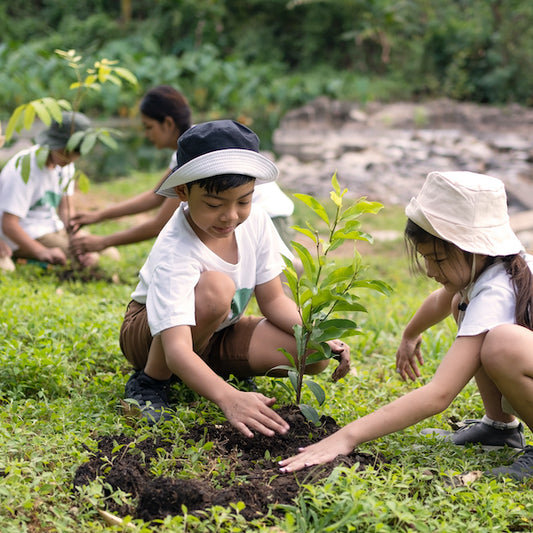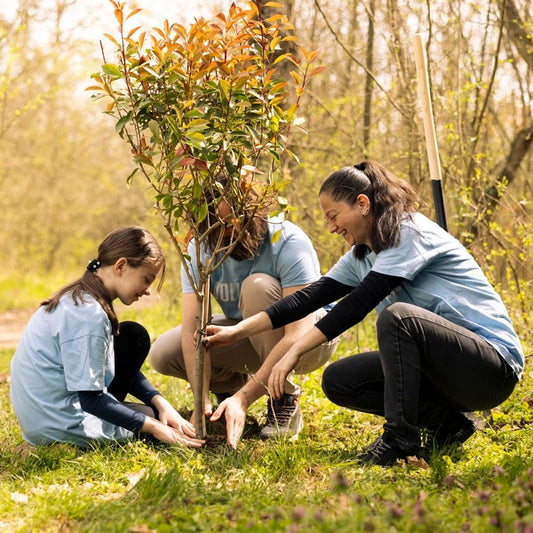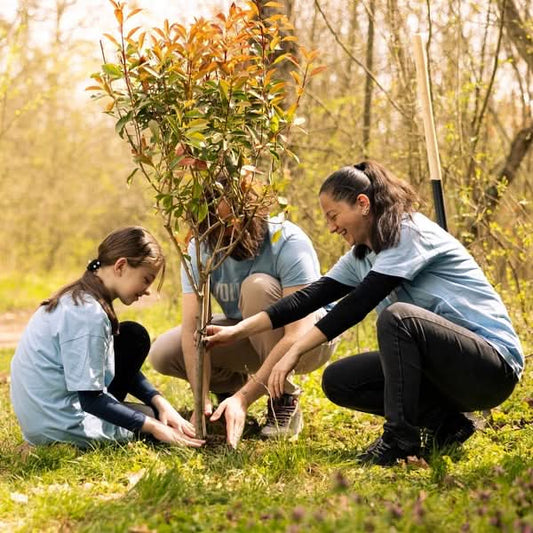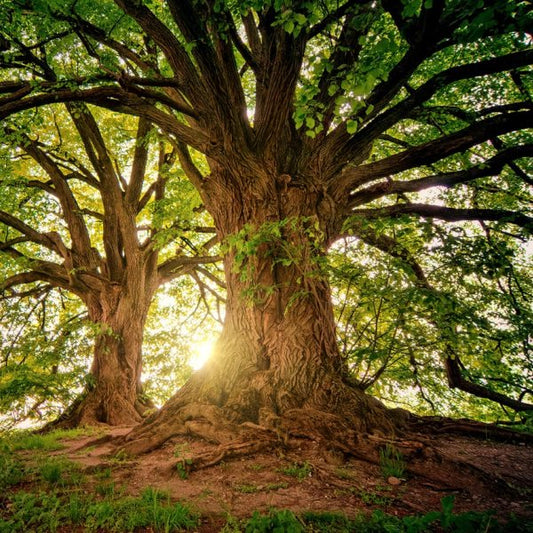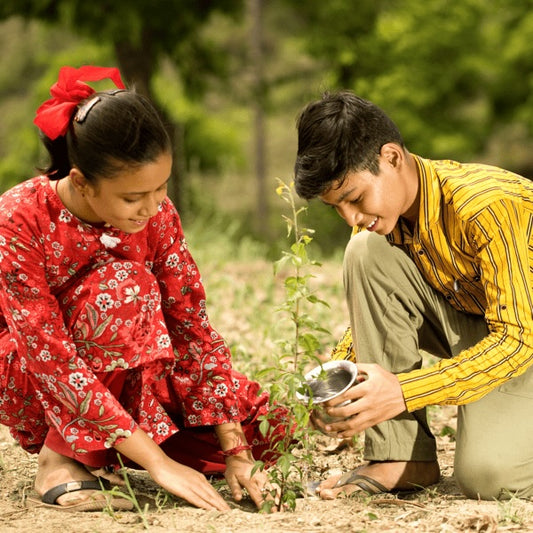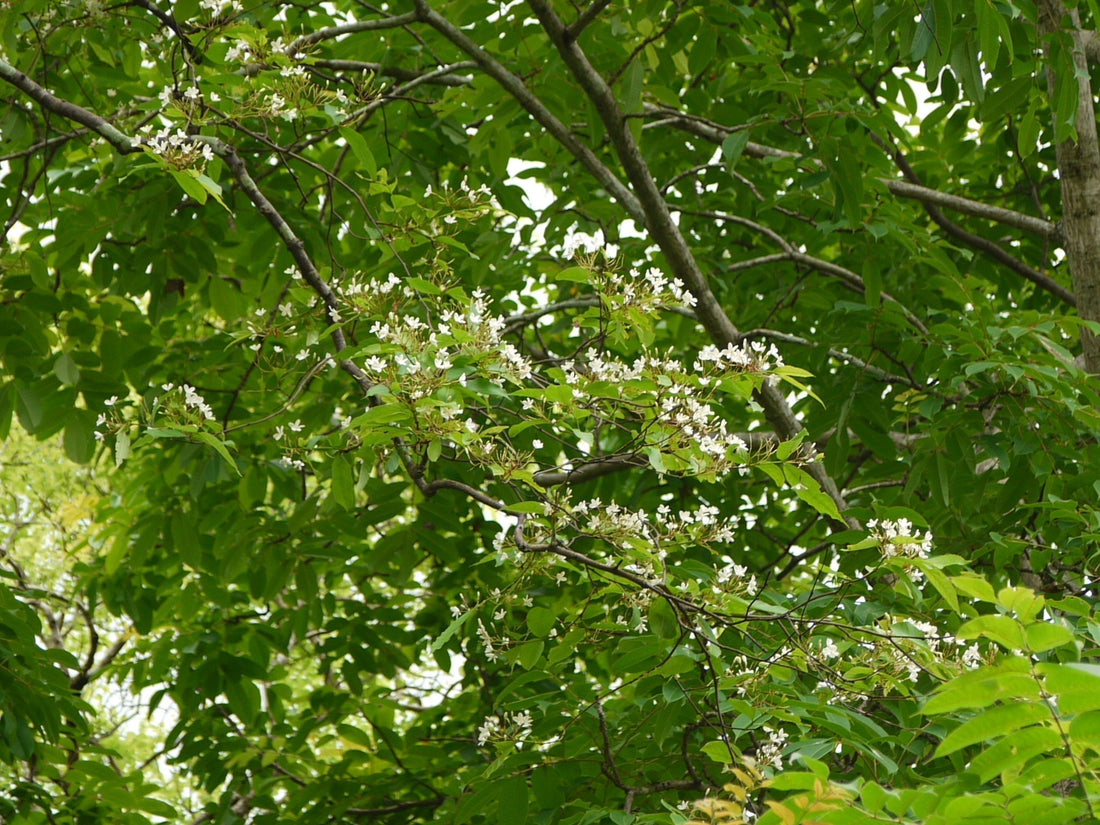

India’s forests have long been treasure troves of healing — filled with trees that are more than just green canopies. One such lesser-known but incredibly powerful species is the Kurchi Tree, also called the Ivory Tree or Holarrhena pubescens. While Read more
Trending
Trees for Corporates
Kurchi Tree (Ivory Tree): India’s Forgotten Healing Gem 🌿
India’s forests have long been treasure troves of healing — filled with trees that are more than just green canopies. One such lesser-known but incredibly powerful species is the Kurchi Tree, also called the Ivory Tree or Holarrhena pubescens. While it might not dominate Instagram-worthy landscapes like the Gulmohar or Banyan, this tree is a pharmacological superstar hiding in plain sight.
Known for its potent medicinal bark, creamy white flowers, and elegant stature, the Kurchi tree has been used for centuries in traditional medicine systems like Ayurveda and Unani. But what makes this tree truly fascinating is the blend of its cultural legacy, ecological value, and pharmaceutical potential.
Let’s dig deep into the roots of the Kurchi / Ivory Tree and unearth its story — from ancient texts to modern labs.
🌱 Scientific Classification
-
Scientific Name: Holarrhena pubescens
-
Family: Apocynaceae (same family as oleander and periwinkle)
-
Common Names:
-
Kurchi (Hindi)
-
Kutaja (Sanskrit)
-
Inderjao Safed (Unani)
-
Kavatha (Marathi)
-
Vatsaka (Ayurvedic name)
-
Ivory Tree (English)
-
-
Native to: Indian subcontinent (India, Nepal, Sri Lanka), parts of Southeast Asia
🌳 Botanical Description
Holarrhena pubescens is a deciduous, small to medium-sized tree reaching a height of 6–12 meters. It thrives in dry deciduous forests and scrublands, often found on hillsides, along roadsides, and in open woodlands.
Key Identifiers:
-
Leaves: Opposite, simple, ovate-oblong with a velvety texture.
-
Flowers: White, star-shaped, fragrant, and bloom in terminal clusters during summer.
-
Bark: Smooth, pale grey to whitish with speckled lenticels.
-
Fruits: Long, slender follicles in pairs, containing many silky-haired seeds.
🧬 Phytochemical Powerhouse: What’s Inside Kurchi?
The magic of Kurchi lies in its bioactive alkaloids, especially in its bark and seeds.
Key Active Compounds:
-
Conessine: A steroidal alkaloid with anti-diarrheal, anti-amoebic, and antimicrobial activity.
-
Holarrhenine, holarrhine, and pubescine: Known for anti-inflammatory and antimalarial effects.
-
Flavonoids and triterpenoids: Add antioxidant and immune-boosting value.
This phytochemical cocktail has made Kurchi a reliable natural remedy for a wide range of gastrointestinal disorders.
🏺 Historical and Cultural Significance
Kurchi isn't a recent discovery. Ancient Indian scriptures and medicinal texts have sung praises of this tree’s therapeutic powers.
-
In Ayurveda, it's called “Kutaja” and mentioned in Charaka Samhita and Sushruta Samhita for treating dysentery and diarrhea.
-
In Unani medicine, it’s known as “Inderjao Safed” and prescribed as a natural cooling agent and stomach tonic.
-
Tribal communities have used crushed bark in decoctions to treat intestinal infections and fevers for centuries.
Its name “Ivory Tree” comes not from its color but from its pale bark and creamy white flowers, which resemble polished ivory under sunlight.
🩺 Medicinal Uses and Modern Applications
The Kurchi tree may look humble, but it’s a medicinal powerhouse with centuries of empirical backing.
1. Anti-diarrheal and Anti-dysentery Properties
Kurchi bark powder is one of the most reliable herbal treatments for chronic diarrhea, amoebiasis, and colitis. Even modern pharma formulations like Kutajarishta (Ayurvedic tonic) use it as a key ingredient.
2. Anthelmintic Activity
The seeds and bark help in eliminating intestinal worms and parasites.
3. Antibacterial and Antimicrobial
Conessine-rich extracts have shown efficacy against various bacterial strains like E. coli and Shigella.
4. Anti-inflammatory and Antioxidant
Used in traditional remedies for reducing inflammation, promoting wound healing, and neutralizing free radicals.
5. Diabetes Management
Preliminary studies suggest hypoglycemic effects, making it a potential herbal ally for blood sugar control.
6. Fever and Malaria
Tribal medicine systems use Kurchi to reduce fever and symptoms of malaria, thanks to its alkaloidal content.
🌿 Fun Facts About Kurchi / Ivory Tree
-
It’s bitter to taste, but sweet in results — ask any Ayurvedic practitioner!
-
The powdered bark was once exported to Europe as a botanical anti-diarrheal before synthetic drugs.
-
Kurchi bark is often used in Ayurvedic preparations along with Bel (Aegle marmelos) for enhanced gut health.
-
The tree is often planted near forest temples, symbolizing healing and natural guardianship.
-
In Ayurveda, it’s considered “Grahani Nashak” — destroyer of intestinal disorders.
🌎 Ecological Importance and Environmental Role
Kurchi is more than just a healer for humans — it’s a silent caretaker of nature too.
1. Soil Stabilization
Its deep root system prevents soil erosion and improves land stability in dry areas.
2. Reforestation Potential
Fast-growing and drought-resistant, it’s ideal for afforestation in degraded lands.
3. Pollinator Magnet
Its fragrant white flowers attract bees, butterflies, and other pollinators, supporting biodiversity.
4. Low Water Demand
Perfect for eco-restoration in arid and semi-arid regions due to its low irrigation needs.
🪴 How to Grow Kurchi / Ivory Tree
Interested in planting a pharmacy in your backyard? Kurchi is low-maintenance and farmer-friendly.
Growing Conditions:
-
Soil: Well-drained sandy or loamy soils
-
Sunlight: Full sun to partial shade
-
Watering: Minimal once established
-
Spacing: 2–3 meters apart for optimal growth
Propagation:
-
From seeds or stem cuttings
-
Best sown in pre-monsoon or early rainy season
-
Germination begins within 2–3 weeks
🧠 Mythology and Folklore
Kurchi may not have gods attached to its name like Peepal or Neem, but in folk medicine, it’s revered as the “Doctor of the Forest.”
-
Villagers believe placing Kurchi bark under the pillow relieves bad dreams (likely due to its calming alkaloids).
-
In tribal Orissa and Chhattisgarh, the tree is never cut unnecessarily, as it’s believed to ward off evil spirits and “gut diseases.”
📈 Demand and Commercial Potential
With the surge in demand for herbal and organic remedies, Kurchi’s popularity is rising again.
-
Used in pharmaceuticals, nutraceuticals, and herbal supplements
-
Grown commercially in parts of Maharashtra, Madhya Pradesh, and Odisha
-
Export demand for Kurchi bark and seeds is increasing in markets focused on gut health and immunity
🚨 Caution and Side Effects
While Kurchi is natural, that doesn’t mean it's risk-free. Overdosage or unsupervised use can cause:
-
Nausea or vomiting
-
Liver stress in rare cases
-
Allergic reactions in sensitive individuals
Always consult an Ayurvedic doctor or herbal practitioner before starting Kurchi-based medicines.
🔚 Conclusion
The Kurchi / Ivory Tree (Holarrhena pubescens) is a hidden warrior of Indian forests — a tree that’s gentle in presence but powerful in action. Whether it’s healing stomach disorders, supporting biodiversity, or restoring degraded lands, Kurchi quietly makes the world better, one bark strip at a time.
In an era of synthetic pills and over-prescription, this ancient herbal guardian reminds us that nature had solutions long before we had side effects.
Let’s rediscover, replant, and respect the Ivory Tree — India’s bitter cure with a sweet legacy.
Kurchi tree medicinal uses
Known as nature’s gut fixer, Kurchi treats diarrhea, dysentery, and intestinal infections like a pro. Its bark and seeds are a pharmacy in disguise.
Holarrhena pubescens benefits
From healing the gut to fighting microbes and inflammation, this tree does it all. It’s bitter, bold, and brilliantly medicinal.
Kutaj in Ayurveda
Called “Kutaj” in ancient texts, it’s a trusted Ayurvedic herb for gut health and detox. Perfect for your dosha and your digestion.
Ivory tree bark uses
The bark isn’t just pale—it’s powerful. Used in powders, tonics, and pills, it’s packed with alkaloids that clean up your insides.
Conessine in Holarrhena
Conessine is the plant’s secret weapon, battling bacteria and parasites without mercy. Pharma labs love it; your stomach will too.
Kurchi tree cultivation
Easy to grow, drought-tolerant, and soil-friendly, Kurchi thrives with little fuss. Perfect for farmers and forest healers alike.
Ayurvedic remedies for diarrhea
Move over antacids—Kutajarishta and Kurchi bark powder are age-old digestive heroes. No side effects, just smooth sailing.
Holarrhena pubescens side effects
Powerful, yes—but take it right! Overdosing can lead to nausea or mild liver stress. Stick to prescribed doses.
Medicinal trees in India
Among neem and arjuna stands the mighty Kurchi—less famous but no less fabulous in healing power and ecological charm.
Traditional uses of Kutaj
Tribals brew it into teas, Ayurveda makes it a tonic—it’s been healing gut woes long before pharma had a name.
Kurchi vs bel for digestion
Kurchi treats loose motions, Bel handles constipation. Together, they’re the digestive duo India swears by.
Kurchi tree in Unani medicine
Known as Inderjao Safed, it’s a cooling tonic for heat-induced gut issues. Old-school healing with real results.
FAQ
What is the Kurchi or Ivory Tree?
It’s Holarrhena pubescens, a medicinal marvel hiding behind white flowers and a fancy Latin name. Known for curing gut issues, it’s like the herbal equivalent of a digestive reboot—trusted by Ayurveda, backed by science, and grown with zero drama.
Is Kurchi tree really effective for diarrhea?
Oh yes, it’s the boss of bowel control. Kurchi bark has conessine, a powerful alkaloid that kicks out pathogens and calms inflamed intestines. If your stomach is staging a rebellion, this tree can restore order without a prescription.
What are the main medicinal uses of Kurchi?
Kurchi’s greatest hits include treating diarrhea, dysentery, intestinal worms, fevers, and even skin issues. It’s basically a pharmacy disguised as a tree. Tribal healers, Ayurvedic doctors, and even modern researchers swear by its bark and seeds.
Can I use Kurchi for general stomach issues?
Absolutely—if your gut's throwing tantrums, Kurchi is the peacekeeper. It soothes, strengthens, and restores digestive balance. From bloating to bugs, this tree doesn’t just mask symptoms—it fixes the root cause.
Is Kurchi used in Ayurvedic medicine?
Yes, and how! Known as Kutaj, it's featured in classics like Charaka Samhita. Kutajarishta and Kutaja ghan vati are famous Ayurvedic preparations starring this tree as the hero for all things digestion.
Are there any side effects of using Kurchi?
Like any strong-willed healer, it demands respect. Overdosing can cause nausea or liver stress, so stick to recommended doses and avoid self-medication. Bitter doesn’t always mean harmless—ask your Ayurvedic expert first.
Where does the Ivory Tree grow in India?
It prefers dry deciduous forests and scrublands, especially in Maharashtra, Madhya Pradesh, Odisha, and Chhattisgarh. If the soil drains well and the sun shines bright, Kurchi’s ready to thrive.
Can I grow Kurchi at home or on farms?
Yes! It’s farmer-friendly, drought-tolerant, and low-maintenance. Perfect for backyard herbalists or agroforestry setups. Bonus: it improves soil and doesn’t need constant babysitting.
What is conessine in Kurchi bark?
Conessine is the alkaloid MVP of this tree—antibacterial, antiparasitic, and gut-soothing. It’s what makes Kurchi bark such a hit in both herbal remedies and pharma circles.
What’s the difference between Kurchi and Bel?
Kurchi handles diarrhea like a pro, while Bel is great for constipation. Think of them as digestive yin and yang—one stops the flood, the other restarts the flow.
Is Kurchi used in Unani medicine?
Yes! Known as Inderjao Safed, it’s a staple in Unani gut-healing tonics and fever reducers. It’s the herbal multitasker both systems love to keep on their shelf.
Why is it called the Ivory Tree?
Because of its smooth pale bark and creamy white flowers—it looks elegant and noble, like it belongs in a royal botanical lineup. But don’t be fooled—it’s more warrior than showpiece.
Most Popular
Connect with us
-
👥 Corporates
If you are looking for:
- 🌲 Tree Plantation Events
- 📊 CSR Projects
📧 corporate@growbilliontrees.com
📞 +91 9699723523
💬 +91 9325931304 WhatsApp (Only)
🕒 Mon - Sat | 10am - 7pm IST
-
🧩 Tree Plantation NGOs
If you are looking for:
- 💰 Financial Assistance
- 🤝 Operational Support
📧 support@growbilliontrees.com
📞 +91 9699723523
💬 +91 9325931304 WhatsApp (Only)
🕒 Mon - Sat | 10am - 7pm IST
-
🌼 Individuals
If you are looking for:
- 👥 Group Tree Plantation Drive
- 🌳 Bulk Tree Plantation
📞 +91 9699723523
💬 +91 9325931304 WhatsApp (Only)
🕒 Mon - Sat | 10am - 7pm IST

